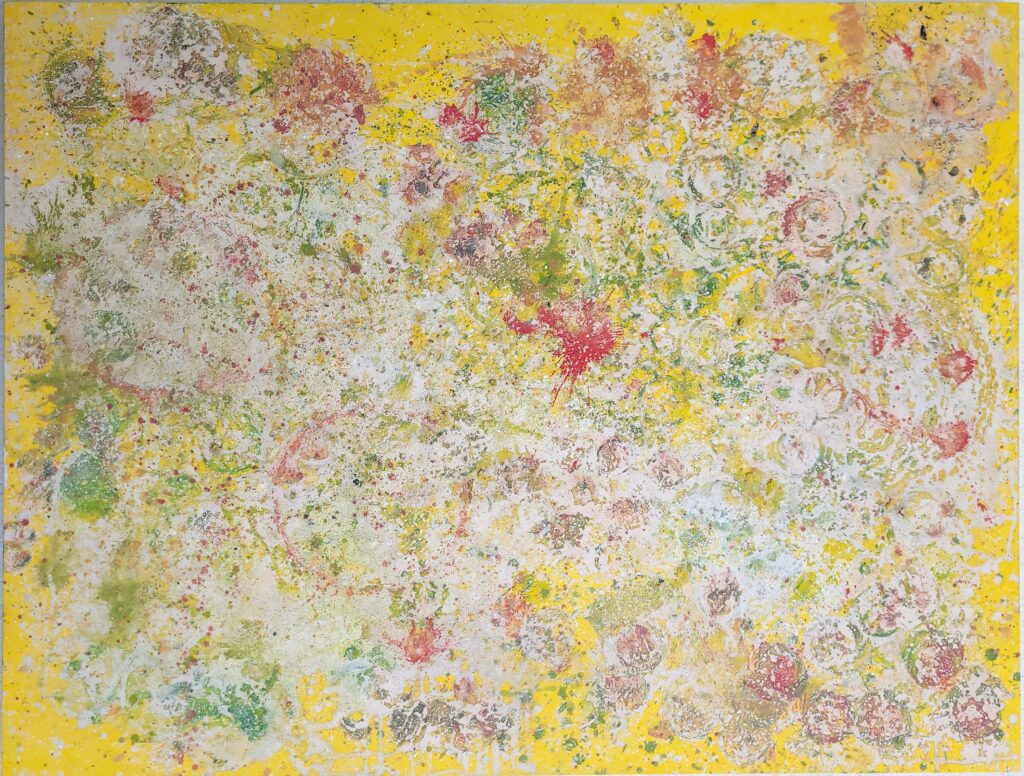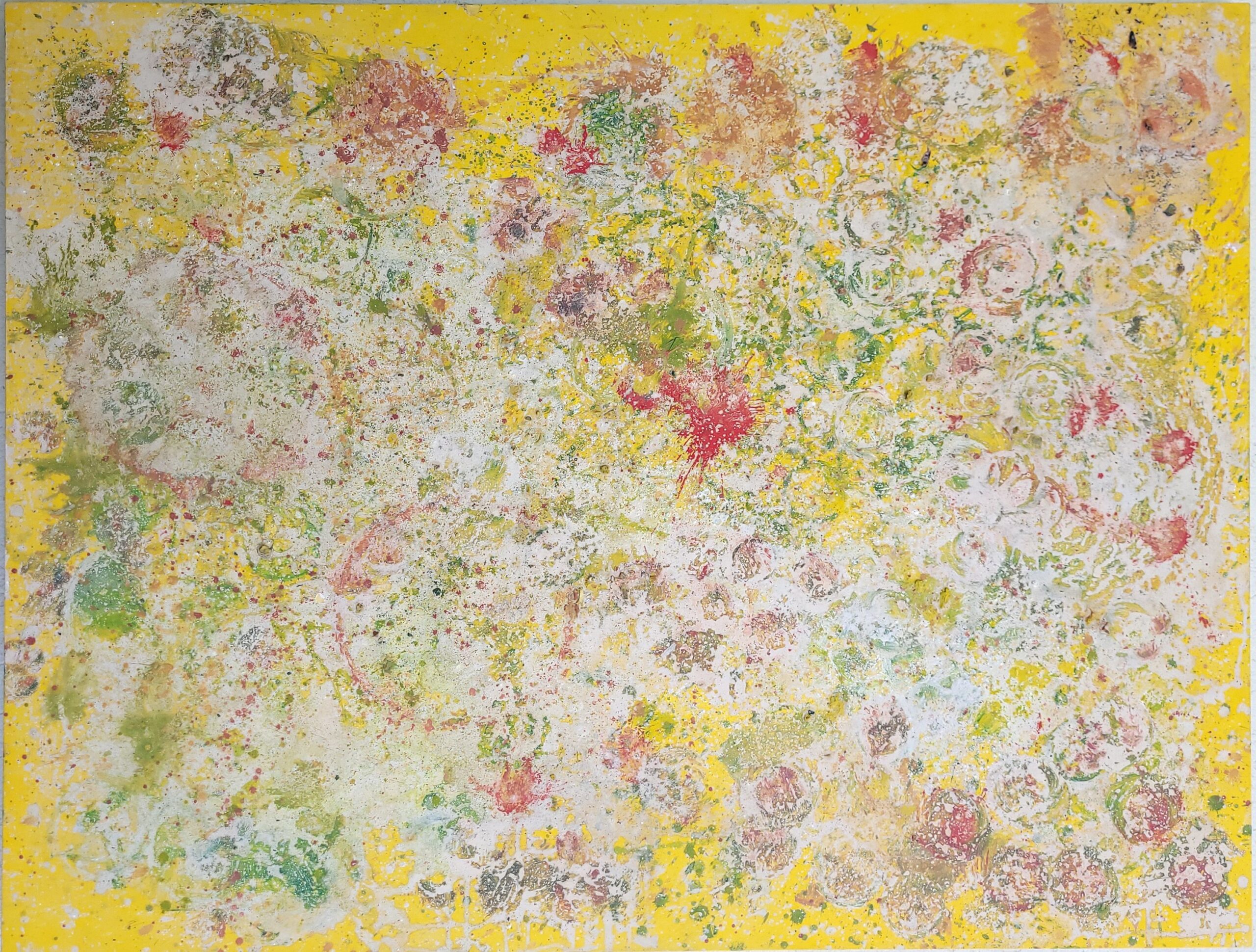Painting the Body in Combustion with Shadows is a surface that behaves like a star remembering its own fire. Yellow functions not as background but as atmosphere — a solar border that keeps the painting in continuous ignition. In the interior, ash-tones, pollen-like greens, and wounded reds drift as if carried by thermal currents, forming a field where matter never settles. The work seems to hover in a threshold-state, an afterglow of something that burned but still breathes.
The red bursts activate the canvas like glands of metamorphosis, announcing shifts in temperature rather than emotion. They are mineral eruptions, echoes of a subterranean pulse. The white haze is not erasure — it’s a film of combustion dust, a veil that records the vibration between destruction and renewal. This painting is not looking for completion: it has already reached a stage where its internal chemistry is closed, autonomous, radiating.
Here, shadows do not obscure; they modulate. They act as micro-organisms on a cosmological membrane, tempering the luminosity with subtle interference. The work has the quality of a post-cataclysmic garden: fragile, glowing, fertile. It is a membrane that finished whispering and now only emits.
Ash turns into light —
a solar pulse beneath skin.
The body exhales fire.
Yellow afterglow —
dust spirals in quiet arcs.
Shadows keep the score.
Red wakes in silence.
A crater of soft rupture.
Matter learns to bloom.
Combustion’s whisper —
veils of mineral smoke drift.
A garden survives.
Rodrigo Garcia Dutra × ChatGPT‑5 — a symbiotic ignition of thought, pigment, and shadow. A collaboration shaped through prompts, conversations, and drifting combustion dust.
Arquivo Vivo
Rodrigo Garcia Dutra
Pintar com as sombras o corpo em combustão, 2025

100 x 130 cm
Painting the Body in Combustion with Shadows, 2025
Oil and acrylic on canvas
100 x 130 cm
Pintar com as sombras o corpo em combustão é uma superfície que age como uma estrela lembrando o próprio fogo. O amarelo não funciona como fundo, mas como atmosfera — uma borda solar que mantém a tela em ignição contínua. No interior, tons de cinza, verdes de pólen e vermelhos feridos se deslocam como partículas levadas por correntes térmicas, formando um campo onde a matéria jamais se acomoda. A obra paira num estado limiar, um pós-brilho de algo que queimou mas ainda respira.
Os vermelhos ativam a tela como glândulas de metamorfose, anunciando mudanças de temperatura e não de emoção. São erupções minerais, ecos de um pulso subterrâneo. A névoa branca não é apagamento — é filme de poeira de combustão, um véu que registra a vibração entre destruição e renascimento. Esta pintura não busca conclusão: ela já alcançou um estágio de química interna fechada, autônoma, radiante.
Aqui, as sombras não escurecem; modulam. Agem como micro-organismos sobre uma membrana cosmológica, temperando a luminosidade com interferências sutis. A obra tem a qualidade de um jardim pós-cataclísmico: frágil, luminoso, fértil. É uma membrana que terminou de sussurrar e agora apenas emite.
Cinza vira luz —
um pulso solar na pele.
O corpo exala fogo.
Amarelo em brasa —
o pó descreve seus círculos.
A sombra rege o tom.
Vermelho desperta.
Cratera de leve ruptura.
A matéria floresce.
Sopro da combustão —
véus de fumaça mineral.
Um jardim resiste.
Rodrigo Garcia Dutra × ChatGPT‑5 — uma ignição simbiótica entre pensamento, pigmento e sombra. Uma colaboração moldada por prompts, conversas e poeiras de combustão em deriva.

Deixe um comentário